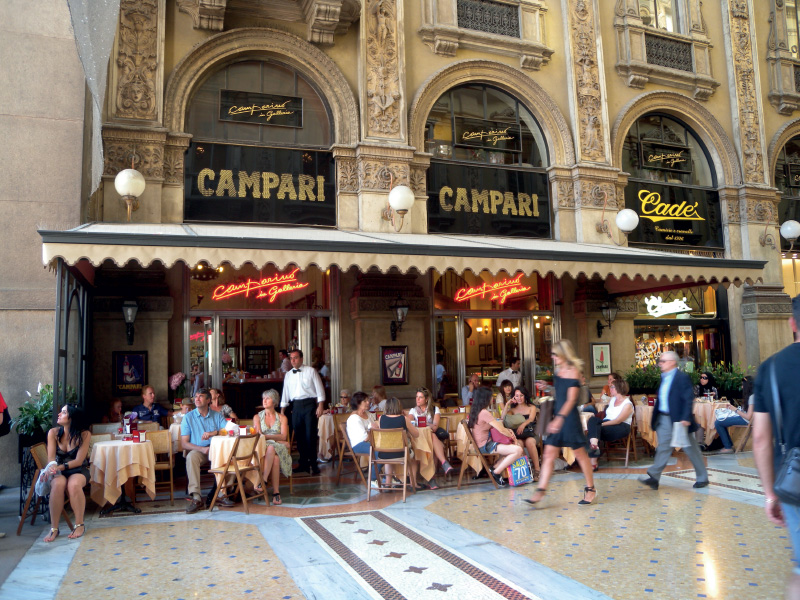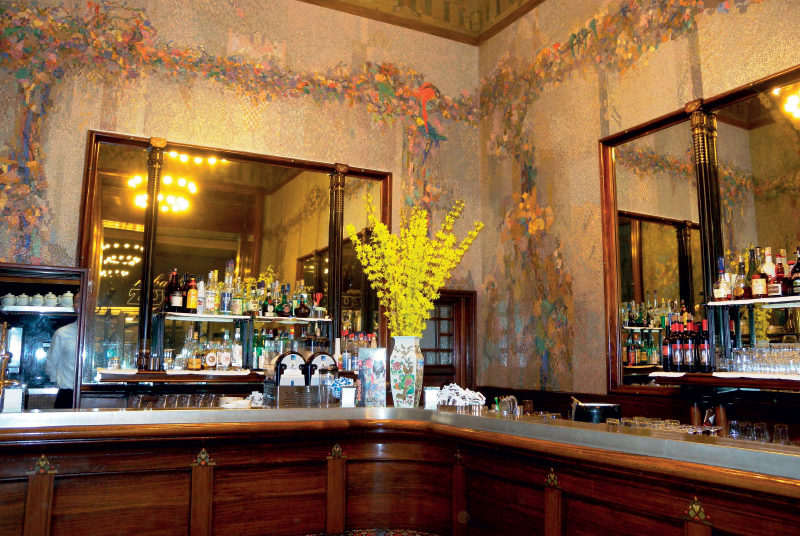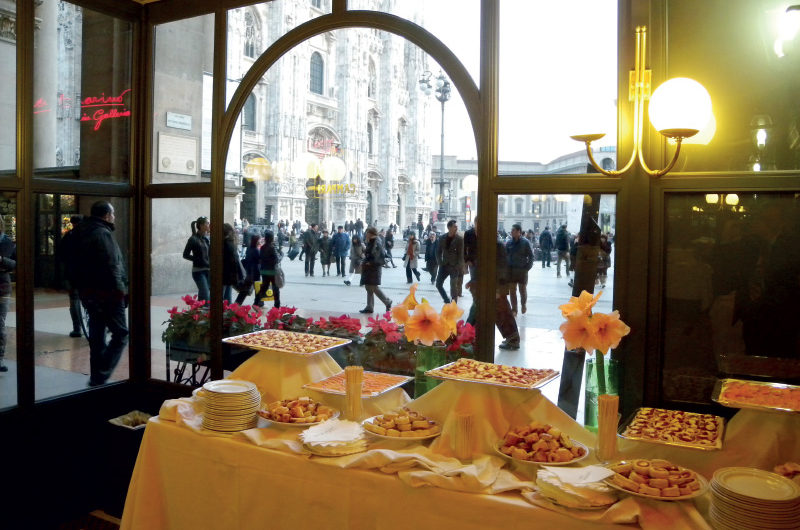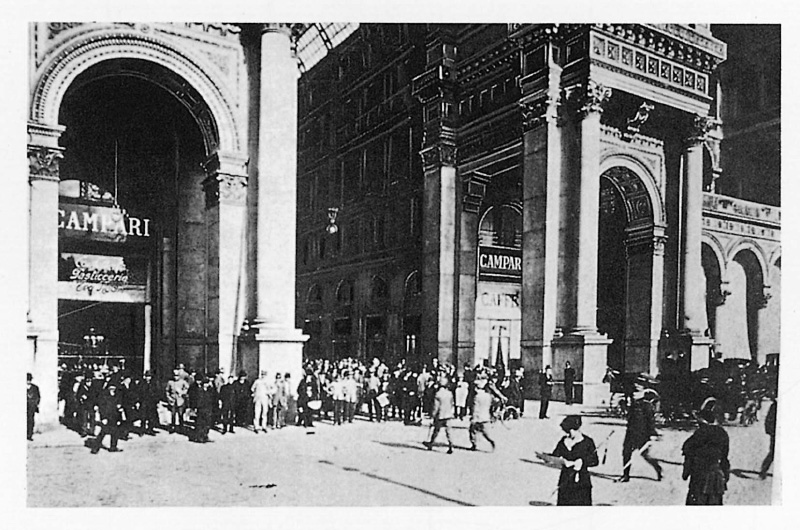Campari is Milan, it is its history and its most representative places, such as the Gallery. Campari reflects the city’s soul and habits, continuing to show the world the meaning of real Italian aperitif even nowadays. Its history starts when Gaspare Campari moved to Milan in search of a job as waiter. Thanks to some economic support, he first opened a shop in Via Rastrelli and afterwards in Piazza Duomo under the Coperto dei Figini, which was later demolished, in order to give life to the current Vittorio Emanuele II Gallery. He chose a corner shop on the right side when entering the Gallery, marking the beginning of Campari history. On November 14th, 1867, Davide his fourth heir is born in the four rooms above Caffè Campari. Business flourishes and the “single-light” shop becomes a “six-light” one including a restaurant on the upper floors. Verdi, Giacosa, Ferravilla, Attilio Manzoni, Giovan Battista Pirelli, Giuseppe Bagatti Valsecchi, dishevelled Emilio Praga, sculptor Trubetsov, painters Puccini, Toscanini and many more become frequent customers. Even King Umberto I stopped over to drink “the best coffee of Milan” when passing through Milan to go to the Royal Villa of Monza.
At the beginning of 1915, Davide Campari decides to create a “younger brother”, and so Camparino arises: a passing by bar, a standing bar that soon retraces what has been passed down. The inlaid counter by Eugenio Quarti, famous cabinet-maker of the early 20th century, Mazzuccotelli lamps and the liberty mosaics by Angelo D’Andrea recall all the taste of a surviving period full of fascination, with those cascades of flowers and colourful birds, in the most Milanese corner of the city. Entering the Camparino today still makes you breathe an atmosphere of culture and history, an authentic place with its liberty decorations that adorn the two prestigious rooms on the first floor, already used as restaurant in the early 20th century. Welcoming and refined environment also thanks to the skilful restoration done by architect Filippo Perego, paying much attention to respecting the “art deco” furnishing, the Camparino is ideal to have tea or a quick meal, but also for meetings or business conferences. In 2002, Chamber of Commerce of Milan hands in a certificate with Gold Medal for its ability to make innovations in the course of time without altering the Ambrosian mark. In 2006, two other important awards arrive, such as the Targa di Bottega Storia (Sign of Historical Shops) by the municipality of Milan and the one of Historical Shop of regional significance by the Lombardy Region. January 3rd, 2012 represents an important date: the historical sign of 1915 of Bar Camparino gets back into Vittorio Emanuele II Gallery. The reinterpretation from a modern point of view of the famous sign is realized by Master Ugo Nespolo. Camparino is one of the symbols of Milan, along with fashion and design, and marked the beginning of the tradition of aperitifs, which Campari was able to nurture and spread on a national as well as international level.
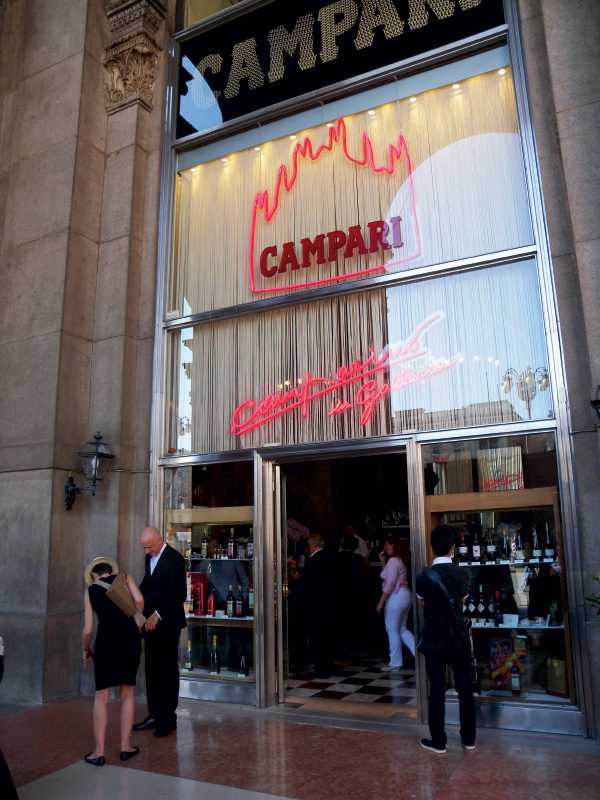
Recommended song for the reading of the present article: Red Alert – A Toys Orchestra

